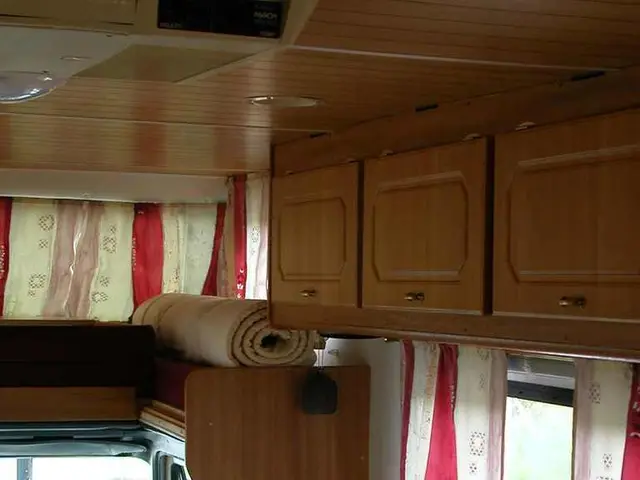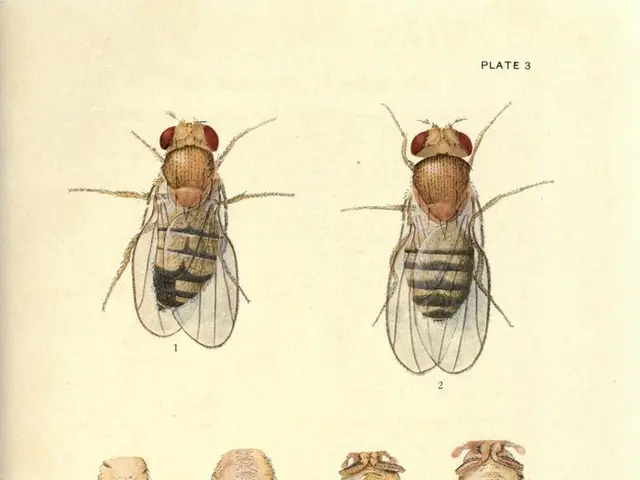Resilient Arbor Species for Tackling Climate Change in Minnesota Landscapes
In an effort to enhance the urban landscapes of Minnesota, horticulturists at the University of Minnesota are compiling a list of climate-resilient, underused landscape trees that are suitable for urban environments in the state [3]. While the detailed list and location-specific planting recommendations are yet to be published, a partial preview of this list was recently announced by the University of Minnesota Extension.
One such tree is the Three-flowered Maple, native to Asia, which can reach heights and widths of 30 feet. It is hardy in zones 4-7, boasts attractive fruits and bright orange to red fall foliage, and is drought-tolerant and can handle exposure to road salts.
Another tree on the list is the American Persimmon, a medium to large tree native to North America, growing to be 35-60 feet tall and 20-35 feet wide. The American Persimmon is hardy in zones 4-8 and can tolerate drought and soils with a high pH. It offers showy flowers, edible and attractive fruit, nice fall color, and is appealing to wildlife.
The 'Golden Glory' Cornelian Cherry Dogwood, a cultivar of a dogwood native to Europe and Asia, is also on the list. It reaches heights and widths of 15-20 feet and is tolerant of drought, floods, and road salts. The tree produces attractive flowers and fruits, the fruits of which are edible and beneficial for wildlife.
The Bitternut Hickory, native to North America, is another tree on the list. It is hardy in zones 4-9 and is drought and flood tolerant, growing in soils with a high pH. The tree can reach heights of up to 70 feet and offers attractive nuts and nicely colored fall foliage.
The American Hornbeam, native to Minnesota, is a smaller tree, reaching a mature size of 20-30 feet tall and 20-30 feet wide. It is hardy in zones 3-9 and tolerates wet conditions, shade, and soils with a high pH.
The Japanese White Pine, native to Japan, is another tree on the list, growing to heights and widths of 25-50 feet and is hardy in zones 4-7. It produces showy fruit and tolerates drought, high pH soils, and road salts.
The Shingle Oak, native to North America, can reach up to 60 feet tall and 60 feet wide. It is hardy in zones 4-8, has attractive acorns, and nicely colored fall foliage. It is drought- and flood-tolerant and can survive in high pH soils.
The European Horse Chestnut is a large tree native to Europe, growing to heights of 50-75 feet and widths of 40-65 feet. It offers showy flowers and fruit, attractive fall color, and attracts wildlife.
The Yellow Birch, native to Minnesota, is a large tree with a maximum height and width of 75 feet. It is hardy in zones 3 -7 and has showy fruits and fall color. Yellow birch is resilient in landscapes with wet or high pH soils.
The Umbrella Magnolia, native to North America, grows 15-30 feet tall and wide. It has attractive flowers, fruits, and fall color and is tolerant of wet conditions and high pH soils.
These trees are part of an ongoing initiative by the University of Minnesota to identify trees that can better withstand changing climate conditions in Minnesota cities. The full detailed list and location-specific planting recommendations are forthcoming but not yet published. To find these specific trees and their recommended planting locations, you would typically consult the University of Minnesota Extension’s resources or the upcoming full publication from UMN horticulturists.
For accurate and location-specific recommendations, monitoring the University of Minnesota Extension website or contacting their horticulture department directly would provide the latest practical guidance and tools when they become available [3].
[3] Source: University of Minnesota Extension Announcement
- The underused landscape trees compiled by horticulturists at the University of Minnesota, aimed for urban environments in Minnesota, include the Three-flowered Maple, the American Persimmon, the 'Golden Glory' Cornelian Cherry Dogwood, and the Bitternut Hickory, all of which are suitable for various climate-change and environmental-science aspects due to their resilience and adaptability.
- In addition to these trees, the list also features the American Hornbeam, native to Minnesota, which is small in size, tolerant of wet conditions, and thrives in high pH soils.
- The Japanese White Pine, native to Japan, is another tree on the list, offering showy fruit, drought tolerance, and the ability to survive high pH soils and road salts, demonstrating its suitability for urban lifestyles and home-and-garden landscaping.




